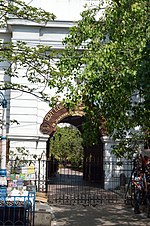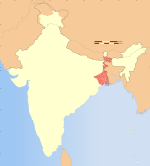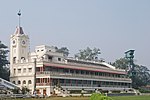Park Street metro station (Kolkata)
1984 establishments in IndiaAsian rapid transit stubsCommons category link is locally definedKolkata Metro stationsRailway stations in Kolkata ... and 3 more
Railway stations opened in 1984Use Indian English from January 2016West Bengal railway station stubs

Park Street (or IIHM Park Street for sponsorship reason) is a station of the Kolkata Metro. The station is located on the crossing of Jawaharlal Nehru Road and Mother Teresa Sarani (previously called Park Street after which the station was named). It is one of the deepest underground metro stations of Kolkata Metro. It is the only underground station to have side platforms, which are mostly seen in elevated metro stations.
Excerpt from the Wikipedia article Park Street metro station (Kolkata) (License: CC BY-SA 3.0, Authors, Images).Park Street metro station (Kolkata)
Jawaharlal Nehru Road, Kolkata Dharmatala (Kolkata District)
Geographical coordinates (GPS) Address Nearby Places Show on map
Geographical coordinates (GPS)
| Latitude | Longitude |
|---|---|
| N 22.55445 ° | E 88.34985 ° |
Address
Park Street (Maidan Gate)
Jawaharlal Nehru Road
700001 Kolkata, Dharmatala (Kolkata District)
West Bengal, India
Open on Google Maps








